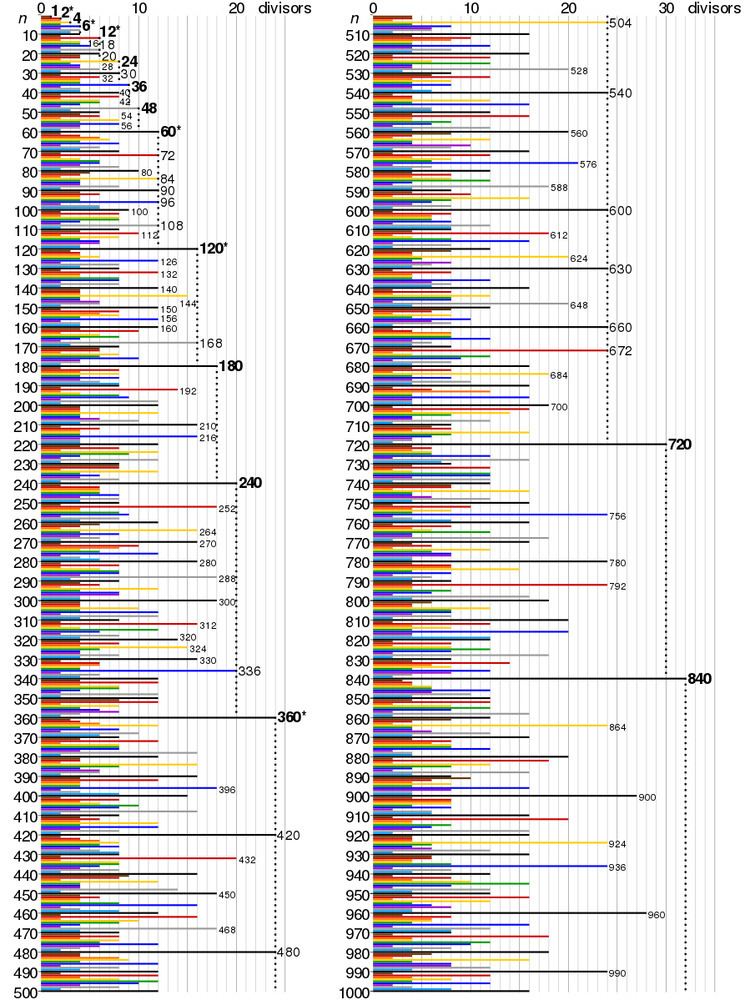 | ||
The tables below list all of the divisors of the numbers 1 to 1000.
A divisor of an integer n is an integer m, for which n/m is again an integer (which is necessarily also a divisor of n). For example, 3 is a divisor of 21, since 21/7 = 3 (and 7 is also a divisor of 21).
If m is a divisor of n then so is −m. The tables below only list positive divisors.
Key to the tables
References
Table of divisors Wikipedia(Text) CC BY-SA
